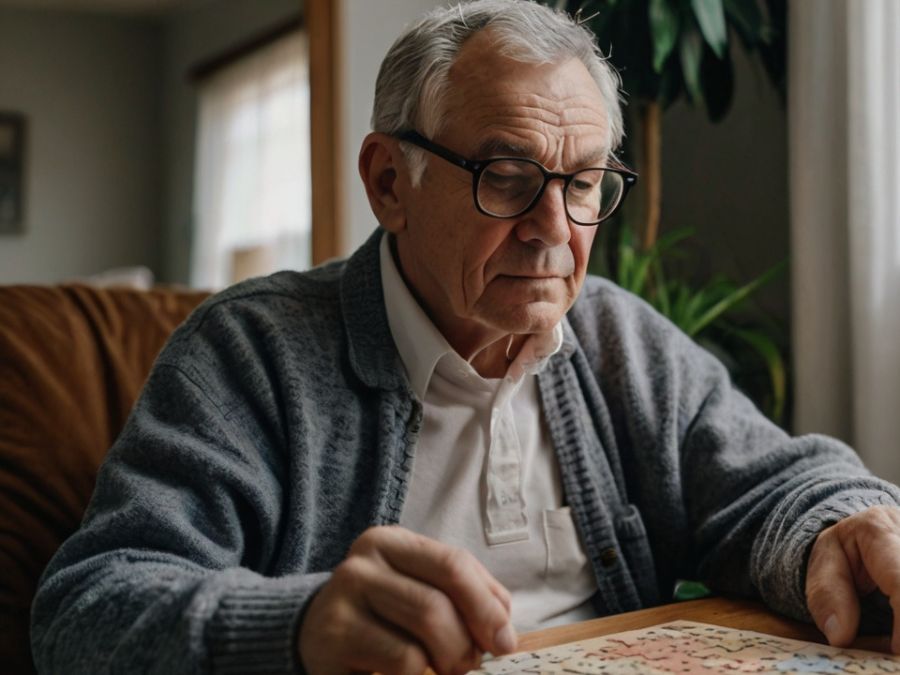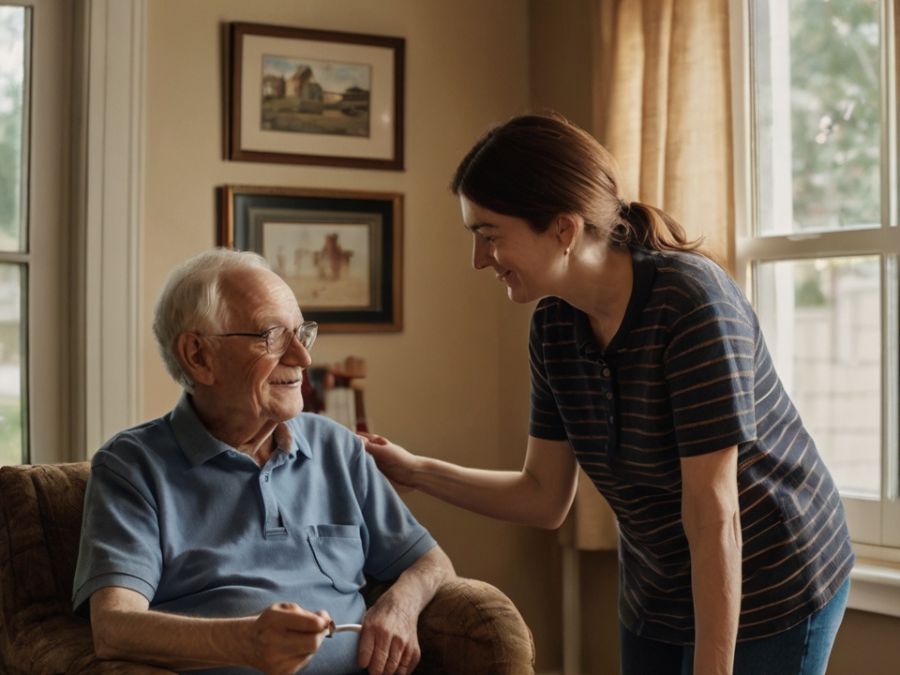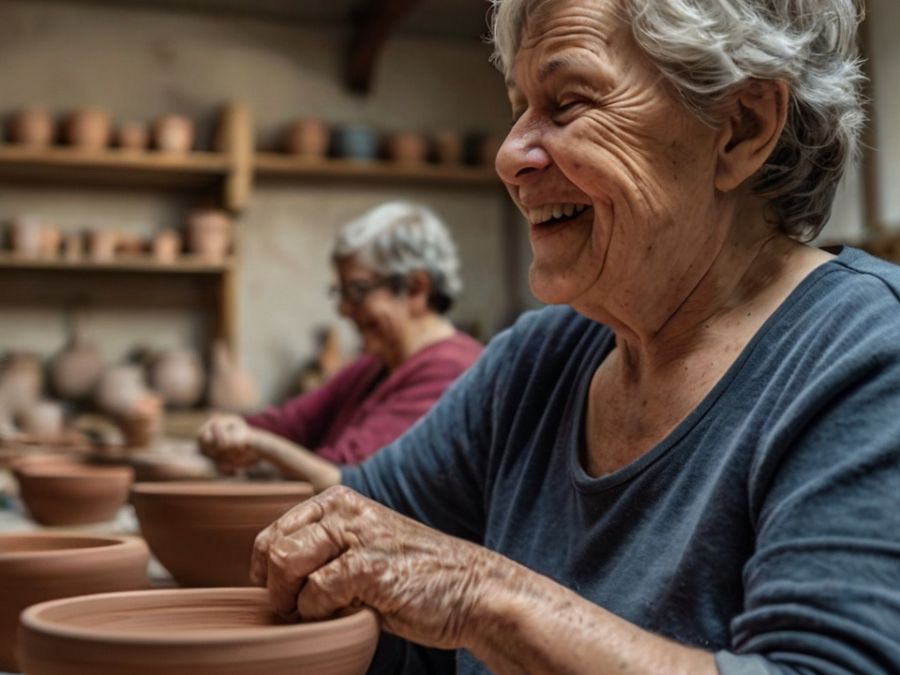Aging and Autism: Specific Care for Older Adults

Introduction
Aging and autism are two realities that, until recently, were rarely discussed together. Autism Spectrum Disorder (ASD) has long been associated with childhood, leading many to overlook the fact that autistic people also age — and with them, their specific needs evolve.
Today, more and more individuals are reaching older age without ever having received a diagnosis in childhood or adolescence. Others, already diagnosed, are entering new life stages that bring physical, emotional, and social changes — changes that require adapted care and understanding.
In this article, we’ll explore how aging and autism intersect, what specific challenges older adults on the spectrum may face, and how to ensure quality of life, autonomy, and inclusion in old age. All content is based on scientific studies, real-life accounts, and the latest evidence in gerontology and neurodiversity.
What Is Autism in Older Adults?

A brief definition of Autism Spectrum Disorder
Autism Spectrum Disorder (ASD) is a neurodevelopmental condition characterized by differences in communication, social interaction, behavior, and sensory processing. Each autistic person is unique — which is why the term “spectrum” is used.
Although symptoms are usually identified in childhood, many adults and seniors only receive a diagnosis later in life. This happens because autism was historically underdiagnosed or misunderstood, especially in people with average or high intelligence and in women, who tend to camouflage their traits.
How aging impacts individuals with autism
Aging brings universal physiological and emotional changes, such as memory decline, decreased mobility, and the loss of close relationships. In autistic individuals, these changes can have specific effects:
- Increased sensory sensitivity due to reduced neurological tolerance
- Greater difficulty adapting to new routines or changes in environment
- Higher risk of social isolation and depression
- Communication challenges that become more pronounced with age
- Difficulties accessing health services that are not neurodivergence-friendly
That’s why understanding the unique aspects of autism in older adults is essential to promote adequate and respectful care.
The Importance of Late Diagnosis

Why many people are only diagnosed in old age
Many older adults are only diagnosed with autism after the age of 50, 60, or even 70. This phenomenon is called late diagnosis. But why does this happen?
- Autism was little known in past decades
- Many traits were misinterpreted as shyness, stubbornness, or eccentricity
- Masking behaviors made autism less visible
- Lack of professionals trained to recognize autism in adults
Receiving a diagnosis in old age can bring a deep sense of relief. It allows individuals to understand their life stories in a new light and to access proper support.
Psychological impact of understanding oneself through diagnosis
Although late diagnosis comes with challenges — such as grief for lost opportunities — it also brings self-knowledge and validation.
As reported in studies published in Autism in Adulthood, seniors diagnosed with ASD often experience:
- Relief at finally having a name for what they always felt
- Better relationships with family and caregivers
- Improved emotional well-being
- Reduction in feelings of inadequacy
Understanding autism in old age is a form of empowerment. It opens the door to healthier and more conscious aging.
Health and Well-being: A Holistic Approach

Physical health and medical care
Older autistic adults need comprehensive medical care that takes into account both age-related conditions and sensory and communication differences. Some key points include:
- Scheduling medical exams at quieter times
- Offering visual communication aids during consultations
- Avoiding abrupt changes in care routines
- Monitoring for conditions like hypertension, diabetes, and arthritis
It’s also essential to maintain regular physical activity adapted to individual capabilities, such as stretching, walking in nature, or chair yoga.
Mental health and emotional support
Mental health is another crucial aspect of aging and autism. Many older adults face:
- Anxiety due to changes in routine
- Depression linked to isolation
- Fear of being misunderstood in care environments
Professional follow-up with psychologists or psychiatrists who understand neurodiversity is essential. Techniques such as cognitive behavioral therapy (CBT) adapted for autism and mindfulness practices can be highly effective.
Support groups for autistic seniors — whether in person or online — are also valuable for fostering a sense of belonging.
Nutrition and sensory adaptations
Food preferences can be significantly influenced by sensory sensitivities, which may increase with age. Some recommendations:
- Offer foods with consistent textures and mild flavors
- Avoid sudden changes in meals or presentation
- Respect the individual’s food rituals and preferences
Nutritional monitoring is crucial to prevent deficiencies or conditions like malnutrition or obesity, which can silently compromise health in the elderly.
Role of Family and Caregivers

How to support an autistic senior at home
Caregivers and family members play a fundamental role in ensuring well-being. Here are some guidelines:
- Respect routines and provide predictable structure
- Create a calm environment with low sensory stimulation
- Use visual aids or alternative communication if needed
- Encourage autonomy in daily tasks
It’s essential to offer support without infantilization. Seniors with autism deserve respect and autonomy in decision-making.
Building trust and safe environments
Trust is especially important for autistic individuals. Seniors may be more vulnerable to trauma or emotional distress if they are not treated with care and consistency.
Creating a safe environment includes:
- Allowing time for transitions
- Respecting personal boundaries
- Avoiding sarcasm, irony, or vague expressions
Trust is built over time, with honest, clear, and consistent communication.
Caregiver burnout and support networks
Caring for an older adult on the spectrum can be rewarding but also exhausting. Caregivers need support to avoid physical and emotional exhaustion.
Some strategies include:
- Participating in support groups for caregivers of autistic adults
- Delegating responsibilities among family members
- Taking breaks for rest and personal care
- Seeking guidance from professionals specialized in neurodiversity
Valuing caregivers is also part of caring for the person with autism.
Housing, Autonomy, and Inclusion

Independent living vs. assisted living
Older adults with autism may have varying needs when it comes to housing. While some live independently, others benefit from assisted living settings. The key is to offer flexible and personalized options, such as:
- Living alone with regular check-ins from caregivers
- Co-housing with family members or trusted friends
- Supported housing with neurodiversity-trained professionals
- Retirement homes that offer low-sensory environments and inclusive activities
Each model should aim to respect the individual’s preferences and preserve autonomy as much as possible.
Inclusive environments and neurodivergent-friendly spaces
Creating neurodivergent-friendly environments is essential to ensure the comfort and dignity of older autistic individuals. Some adjustments may include:
- Lighting that avoids harsh fluorescents
- Quiet zones in shared spaces
- Clear and consistent signage
- Predictable daily schedules
These adaptations benefit not only autistic seniors but also older adults with dementia or sensory processing disorders.
Promoting autonomy and decision-making
Autonomy should never be underestimated. Even when cognitive or communication challenges are present, older adults on the spectrum should be actively involved in decisions about their:
- Routine
- Meals
- Medical care
- Social interactions
Use tools such as illustrated calendars, communication boards, or simple questions to involve them in the process. Autonomy preserves dignity and identity.
Social Relationships and Community Life

Overcoming isolation
Loneliness is one of the most serious challenges of aging — and it’s often intensified in autistic individuals who already face social barriers.
To combat this:
- Encourage participation in interest-based community groups
- Offer online or offline support groups
- Facilitate one-on-one connections instead of large gatherings
- Train staff at community centers in neurodiversity inclusion
Socialization doesn’t have to mean crowds. Meaningful, safe relationships are far more beneficial than quantity.
Intergenerational bonding
Intergenerational activities bring benefits for everyone. Older adults with autism can feel valued when sharing knowledge, skills, or stories with younger generations. Ideas include:
- Teaching crafts or hobbies
- Participating in family storytelling circles
- Mentoring young people on the spectrum
- Gardening or cooking projects with grandchildren or neighbors
These exchanges promote empathy, respect, and belonging.
The importance of friendship and companionship
Romantic relationships may not be a priority for every autistic person, but friendship and companionship are crucial. Helping autistic seniors maintain or form friendships contributes to:
- Emotional well-being
- Mental stimulation
- A sense of security and support
It’s important to respect the individual’s boundaries, needs, and communication preferences in building these connections.
End-of-Life Care and Emotional Preparation
Talking about death and aging
End-of-life discussions are sensitive, but they are essential. For autistic individuals, these conversations should be:
- Clear and literal, avoiding metaphors
- Structured with visual or written aids
- Done gradually and respectfully
- Inclusive of the person’s wishes and preferences
Preparation helps reduce anxiety and allows for better emotional regulation during grief or transitions.
Creating a supportive palliative care plan
Palliative care for autistic seniors must consider sensory sensitivities, communication needs, and routines. Key aspects include:
- Providing a calm, familiar environment
- Allowing the presence of familiar people or objects
- Using plain language to explain procedures or symptoms
- Honoring the person’s spiritual or existential beliefs
Respect and comfort must guide all actions during this stage.
Grieving and emotional processing
Autistic individuals grieve — sometimes differently, but no less deeply. Support should include:
- Time and space to express emotions in their own way
- Alternative communication strategies if needed
- Respect for silence, repetition, or non-traditional rituals
- Long-term follow-up with mental health professionals
Acknowledging grief validates their emotions and strengthens emotional health.
Scientific Research and Real-Life Testimonials

What studies reveal about aging and autism
Research into autism in older adults is still growing, but existing studies reveal important findings:
- A study by the Journal of Autism and Developmental Disorders shows that many autistic seniors maintain cognitive skills well into old age, especially in non-verbal areas.
- The Lancet Psychiatry highlights the need for lifelong support systems, as autistic individuals often experience greater health disparities.
- Research by Autistica UK identifies high levels of social isolation and underdiagnosed mental health issues among autistic people over 50.
This data reinforces the need for early interventions, inclusive policies, and continuous care.
Testimonials from autistic seniors
Nothing replaces the power of real-life voices. Here are a few anonymized testimonials from autistic individuals over 60:
“I always thought I was just ‘difficult.’ Getting my diagnosis at 68 helped me forgive myself for decades of confusion.”
“I don’t like loud places or being hugged, and I used to think something was wrong with me. Now I know: I’m autistic. That’s just how my brain works.”
“I may be 75, but I still get excited about dinosaurs, trains, and comic books. And now I know I don’t have to hide that anymore.”
These stories reflect identity, dignity, and authenticity — essential elements of healthy aging.
Policies, Rights, and Advocacy

The importance of inclusive policies
Governments, NGOs, and institutions must recognize the rights of autistic seniors. This includes:
- Access to health care professionals trained in neurodiversity
- Housing options adapted to their needs
- Protection against discrimination and abuse
- Access to social security benefits and mental health services
Public policies need to reflect the diversity of aging experiences.
Combating stereotypes and ageism
Older adults with autism face double stigma: ageism and ableism. Awareness campaigns, inclusive representation, and media visibility help combat:
- The myth that autism is only a childhood condition
- The idea that seniors are incapable of learning or adapting
- The misconception that older autistic people are “difficult” or “withdrawn”
Education is the best way to break these harmful narratives.
Promoting advocacy and representation
Autistic individuals — regardless of age — should have space to advocate for themselves. Encouraging older adults to participate in:
- Community councils
- Research groups
- Neurodiversity advocacy forums
- Policy-making processes
… helps build a more inclusive and just society.
Final Considerations
Aging and autism is a subject that demands visibility, empathy, and practical action. Older adults on the spectrum have often lived lives of silence and misunderstanding — but this reality is changing.
Through personalized care, inclusive environments, scientific research, and real-life listening, we can ensure that autistic seniors age with the dignity, autonomy, and joy they deserve.
Let’s build a future where every person — regardless of age or neurology — is seen, heard, and respected.







